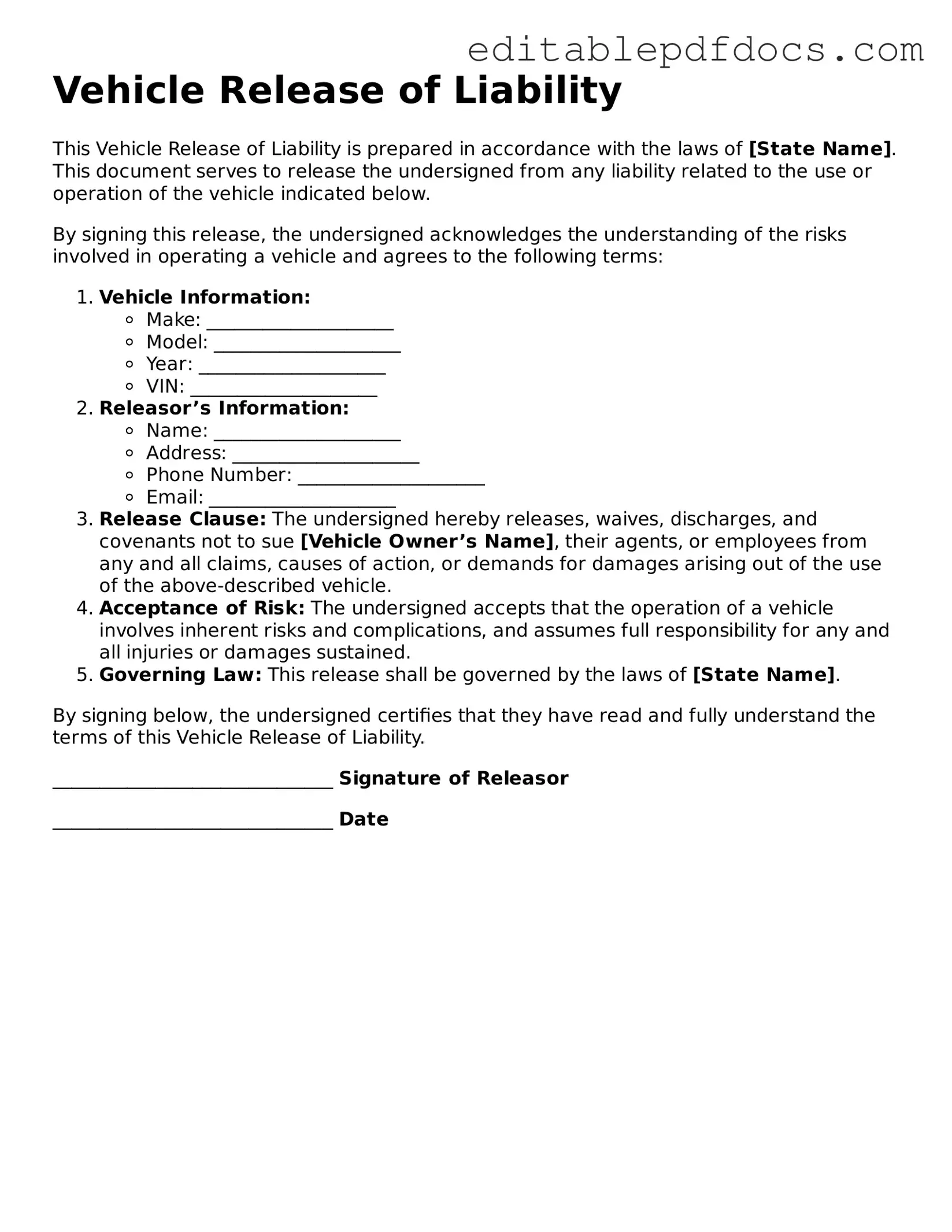The Vehicle Release of Liability form is an important document for anyone involved in the sale or transfer of a vehicle. This form serves to protect the seller from future claims or liabilities that may arise after the vehicle has been sold or transferred. By signing this document, the seller acknowledges that they are no longer responsible for the vehicle and that the buyer assumes all risks associated with its use. Key aspects of the form include the identification of the vehicle, details about the transaction, and a clear statement releasing the seller from any further obligations. It is crucial for both parties to understand the implications of this release, as it can prevent disputes and misunderstandings down the line. Additionally, having this form properly filled out and signed can provide peace of mind to the seller, ensuring that they are legally protected after the transfer is complete. Understanding how to use this form effectively can make the process of selling or transferring a vehicle smoother and more secure for everyone involved.
